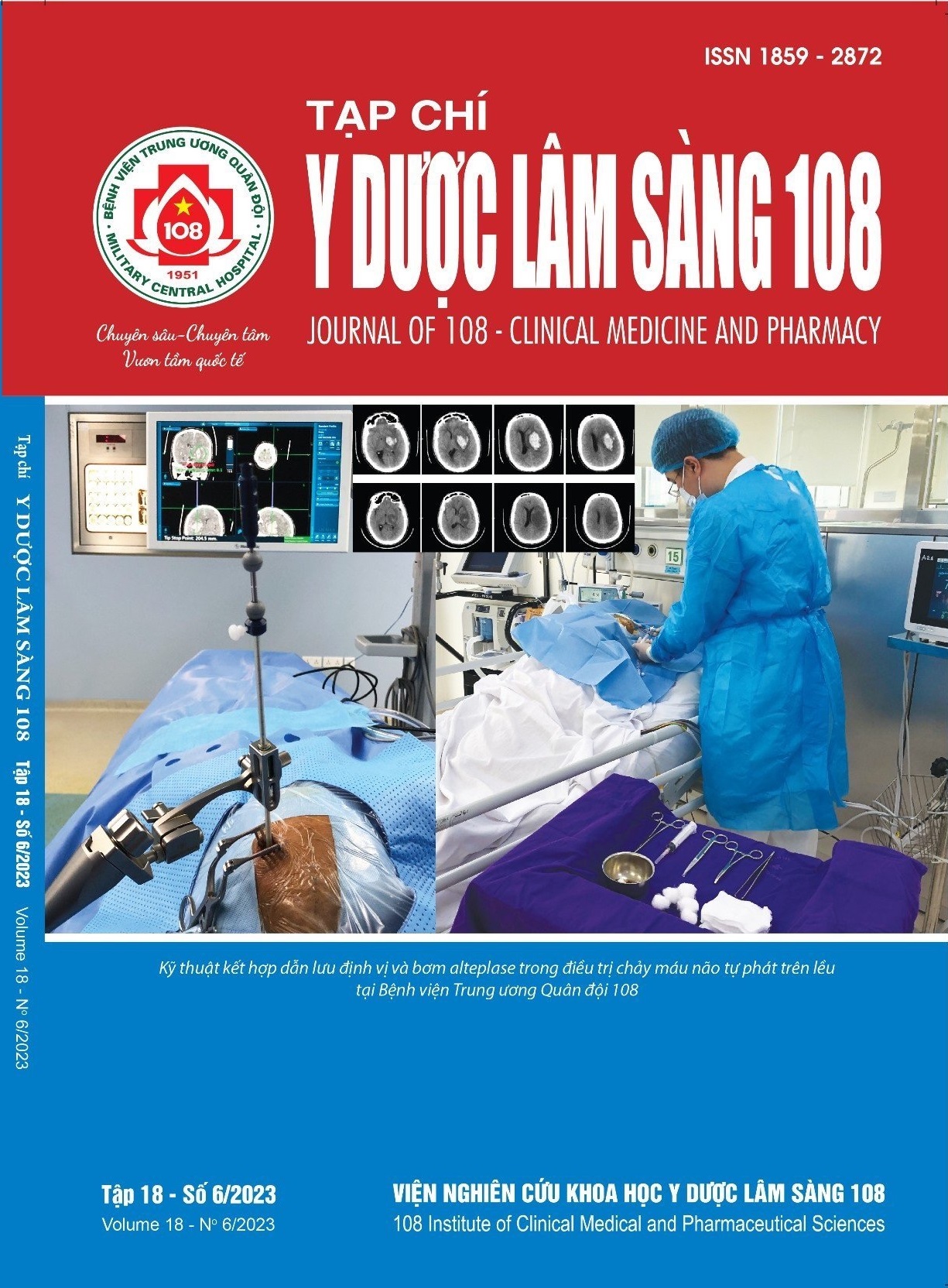Study on the relationship between depression and brain damage images on computed tomography in patients with cerebral infarction
Main Article Content
Keywords
Cerebral infarction, depression, post-stroke depression, brain computed tomography
Abstract
Objective: To evaluate the ralationship between depression and brain injury images on computed tomography in patients with cerebral infarction. Subject and method: A prospective, cross-sectional study, 141 ischemic stroke patients at Stroke Department, 103 Military Hospital. Result: The rate of depression in patients had ischemic stroke frontal lope 66.7% compared with no frontal lobe injury (30.2%), different statistically significant with p<0.05. The mean diameter of cerebral infarction with depression was 28.94 ± 27.64mm higher than that of the non-depressive group (17.27 ± 16.25mm), statistically significant difference with p<0.05. Conclusion: Frontal lobe cerebral infarction, infarct meridians are related to depression after stroke.
Article Details
References
1. Towfighi A, Ovbiagele B, El Husseini N, Hackett ML, Jorge RE, Kissela BM, Mitchell PH, Skolarus LE, Whooley MA, Williams LS; American Heart Association Stroke Council; Council on Cardiovascular and Stroke Nursing; and Council on Quality of Care and Outcomes Research (2017) Poststroke depression: A scientific statement for healthcare professionals from the American Heart Association/American Stroke Association. Stroke 48(2): 30-43.
2. Williams LS, Brizendine EJ, Plue L, Bakas T, Tu W, Hendrie H, Kroenke K (2005) Performance of the PHQ-9 as a screening tool for depression after stroke. Stroke 36(3): 635-638.
3. Spalletta G, Guida G, De Angelis D, Caltagirone C (2002) Predictors of cognitive level and depression severity are different in patients with left and right hemispheric stroke within the first year of illness. J Neurol 249(11): 1541-1551.
4. Starkstein SE, Robinson RG, and Price TR (1987) Comparison of cortical and subcortical lesions in the production of poststroke mood disorders. Brain 110(4): 1045-1059.
5. Narushima K, Kosier J, and Robinson RG (2003) A reappraisal of poststroke depression, intra-and inter-hemispheric lesion location using meta-analysis. The Journal of neuropsychiatry and clinical neurosciences 15(4): 422-430.
6. Robinson RG and Jorge RE (2016) Post-stroke depression: A review. American Journal of Psychiatry 173(3): 221-231.
7. Zhang T, Jing X, Zhao X, Wang C, Liu Z, Zhou Y, Wang Y, Wang Y (2012) A prospective cohort study of lesion location and its relation to post-stroke depression among Chinese patients. Journal of Affective Disorders 136(1-2): 83-87
2. Williams LS, Brizendine EJ, Plue L, Bakas T, Tu W, Hendrie H, Kroenke K (2005) Performance of the PHQ-9 as a screening tool for depression after stroke. Stroke 36(3): 635-638.
3. Spalletta G, Guida G, De Angelis D, Caltagirone C (2002) Predictors of cognitive level and depression severity are different in patients with left and right hemispheric stroke within the first year of illness. J Neurol 249(11): 1541-1551.
4. Starkstein SE, Robinson RG, and Price TR (1987) Comparison of cortical and subcortical lesions in the production of poststroke mood disorders. Brain 110(4): 1045-1059.
5. Narushima K, Kosier J, and Robinson RG (2003) A reappraisal of poststroke depression, intra-and inter-hemispheric lesion location using meta-analysis. The Journal of neuropsychiatry and clinical neurosciences 15(4): 422-430.
6. Robinson RG and Jorge RE (2016) Post-stroke depression: A review. American Journal of Psychiatry 173(3): 221-231.
7. Zhang T, Jing X, Zhao X, Wang C, Liu Z, Zhou Y, Wang Y, Wang Y (2012) A prospective cohort study of lesion location and its relation to post-stroke depression among Chinese patients. Journal of Affective Disorders 136(1-2): 83-87
 ISSN: 1859 - 2872
ISSN: 1859 - 2872
